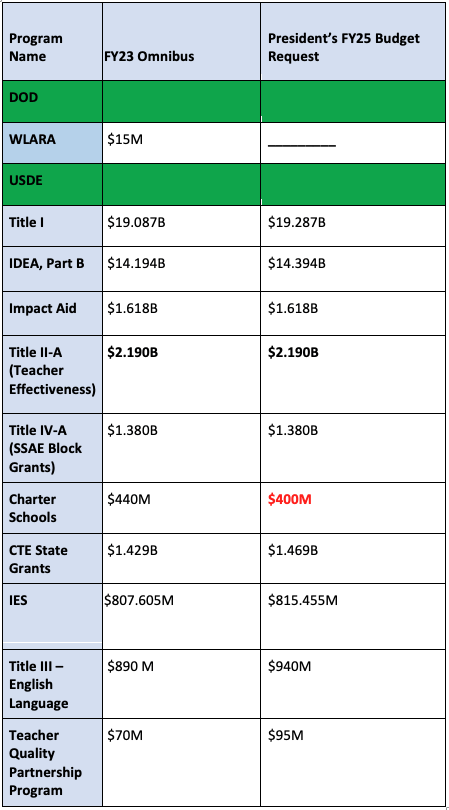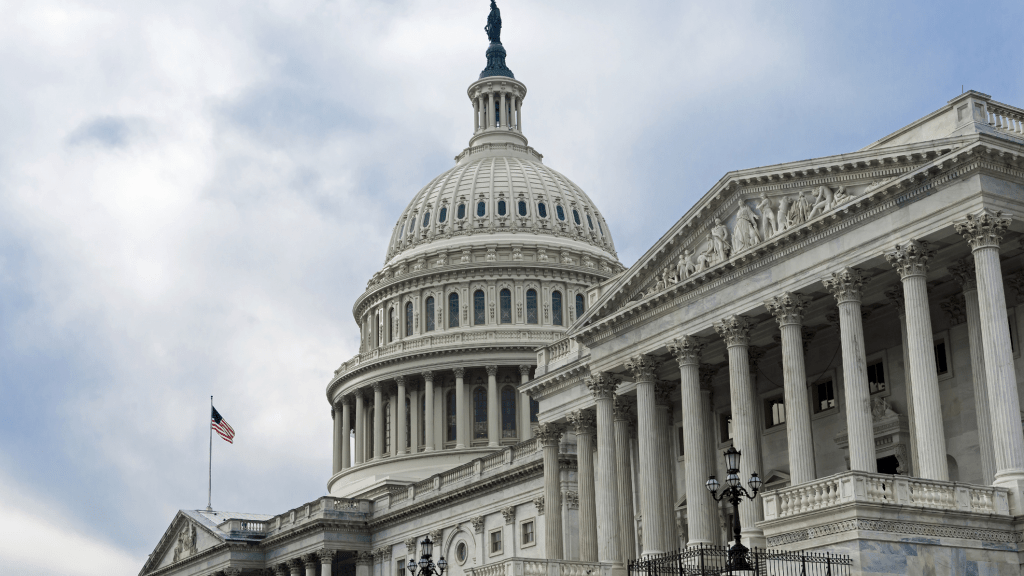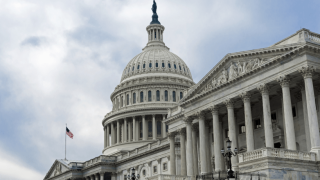On Monday, President Biden released his fiscal year 2025 budget proposal. Constrained by a spending agreement that allows only a 1% overall increase in spending for fiscal year 2025, this is a relatively modest budget. Moreover, with action not yet completed on fully half of all fiscal year 2024 appropriations bills, including the Labor HHS Education Appropriations bill, this budget’s baseline is fiscal year 2023. Thus, some of the funding proposals contained within it may actually look like cuts compared to final fiscal year 2024 numbers. With those caveats, the President’s fiscal 2025 budget seeks only a 3.9% increase over fiscal year 2023 spending totals, which amounts to an additional $3.1 billion. Our key program – Title II – receives flat funding under this proposal.
In addition to the now standard request for money to support free community college tuition, the budget proposes two pricey new programs:
- K-12: A five-year, $8 billion for scaling evidence-based practices for accelerating student learning. This would address chronic absenteeism and encourage tutoring and extended learning time.
- Higher education: $12 billion for a mandatory program focused on reducing the cost of college, largely through expanding dual enrollment programs.
Neither of these two requests are likely to become law.
For existing, regular education programs, this budget makes very reasonable programmatic spending requests. The largest K-12 education programs would see only limited spending increases: an additional $200 million each for Title I and IDEA, $50 million for Title III, and $40 million for Perkins Career and Technical Education. Many other key K-12 programs received level funding, including Impact Aid, Title II, and Title IV. Charter schools would see a $40 million cut.
One significant concern for the Title II community is that the budget singles out programs other than Title II for increases that aim to assist with teacher recruitment and retention. Specifically, the budget provides a $25 million increase to the Teacher Quality Partnership Program “to support the expansion of high-quality, comprehensive, and affordable educator preparation programs, including evidence-based Grow Your Own and residency programs, and supporting high-quality registered apprenticeship programs for teachers.”
The U.S. Department of Education’s Budget Book describes the crisis over teacher shortages well and aptly but refuses to label Title II as one of the obvious solutions: “While the education sector has faced shortages in critical staffing areas for decades, the COVID-19 pandemic and tight labor market have made shortages worse, further exacerbating the already disproportionate impact on students in underserved communities. Schools have made tremendous progress in recovering from the pandemic; while the number of employees in local public education dropped by 9% during the pandemic, as of January 2024, staffing levels had nearly fully returned to pre-pandemic levels. However, teacher shortages and shortages of highly qualified educators remain, with disproportionate impacts on students with disabilities, English learners, students of color, and students in schools serving low-income communities. To help address and eliminate the teacher shortage, the budget elevates the teaching profession by investing in and scaling up high-quality, comprehensive, and affordable pathways to teaching, teacher leadership and career advancement opportunities that support increased compensation and teacher retention, high-quality new teacher induction and job-embedded professional learning, improved working conditions, and educator diversity.”
Below is a breakdown of key K-12 program funding levels:

Also read:








